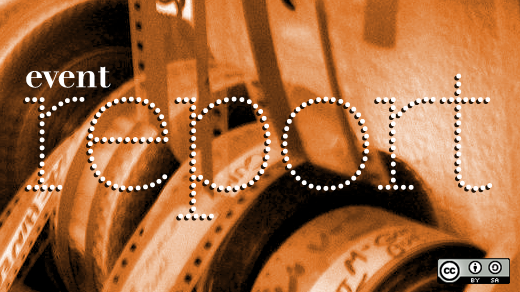I presented “Creating online community the open source way” at the Triangle Drupal Users Group (TriDUG) on the evening of Thursday, July 22 and thought it would be a good idea to share with a broader audience. For this post, I'll use the opensource.com online community as my case study.
Opensource.com is a community for exploring how open source principles like collaboration, transparency, and meritocracy are influencing innovation beyond technology--shaping education, law, business, government, and everyday life. Opensource.com is a platform to share, discuss, and discover how people are applying the open source way, even if they don't call it that.
Many people are familiar with how the
open source development model became successful by using principles of sharing, collaboration, rapid prototyping, and many others. The term “open source way” is the collection of all those principles.
One of my favorite open source principles is failing faster. You may have heard the phrase “release early, release often.” Another version of that is “fail early, fail often.” To me, that means iterative course correction. DeLisa Alexander goes into greater detail about this in her post, “Fear of failure? Embrace it by failing fast.”
How did the opensource.com project team go from an idea to a deployed website with a growing community? We needed what I call the 3 C's: content management system (CMS), content, and community participation.
How we chose our platform
The first step was to identify our goals and audience. Once we determined what we wanted to accomplish, we started looking at open source platforms that would fulfill our goals. Our final decision was Drupal. Some of the factors that led us to Drupal were the hosting and administrative options. But the factors that made Drupal stand out were the community modules available as add-ons allowing us to customize our deployment and the job trends, which for us, mean that the platform and support for it will be around for a while.
More details: http://acquia.com/community/resources/library/red-hat
How we get content
The site is divided into five channels: business, education, government, law, and life. Each channel has moderators who actively write and search for others to write posts. We also invite our community to send our moderators stories they find or to contribute blog posts themselves.
Aside from that, we are always keeping an eye on current events and trends. We conduct interviews with subject matter experts on a variety of topics and invite guest bloggers to contribute their thoughts.
How we build community
We used a multi-pronged approach to building our community. Our approach includes social media, traditional (“old school”) ways, events, and participation on opensource.com.
Social media
First, we decided on a name: opensourceway, laregly because it was descriptive and available across most of the popular social media outlets: Twitter, Identi.ca, Facebook, Flickr, YouTube, and LinkedIn, all of which we now use.
Traditional (“old school”) ways
Some of the traditional tools used to build online communities include email marketing, Internet chat rooms, and mailing lists. Our community asked for an IRC (Internet Relay Chat) channel—you can now find us on Freenode in the #opensource.com channel. We have a large mailing list that receives a monthly email that highlights some of the content published on the site. We also use smaller mailing lists both for content dissemination and smaller, collaborative work within channels.
Events
We've attended a variety of events, and we continue to learn how events can help us drive awareness and grow our community. Each event is different with different audiences and opportunities.
Within four months of launching the site, we hosted our first virtual event. The Open Your World forum was a day-long webinar that brought in speakers from around the world. The presenters were compelling, and it was a great learning experience for us.
Participation on opensource.com
The final part of our multi-pronged approach to community building was what our users could accomplish on the site. We thought it would be best to have some low barriers to participation, such as rating articles and voting on polls.
One of our goals is to encourage visitors to join a conversation and comment on the articles. This is extremely valuable to us because we want to start conversations around the articles we are posting.
Wrapping up
There really are no right and wrong answers to the open source way, but we're trying lots of things. It's important to remember that the principles of the open source way should be used as guidelines when making decisions. But you should always be as transparent as possible with your community.
The “Creating online community the open source way” slides are available below.






7 Comments